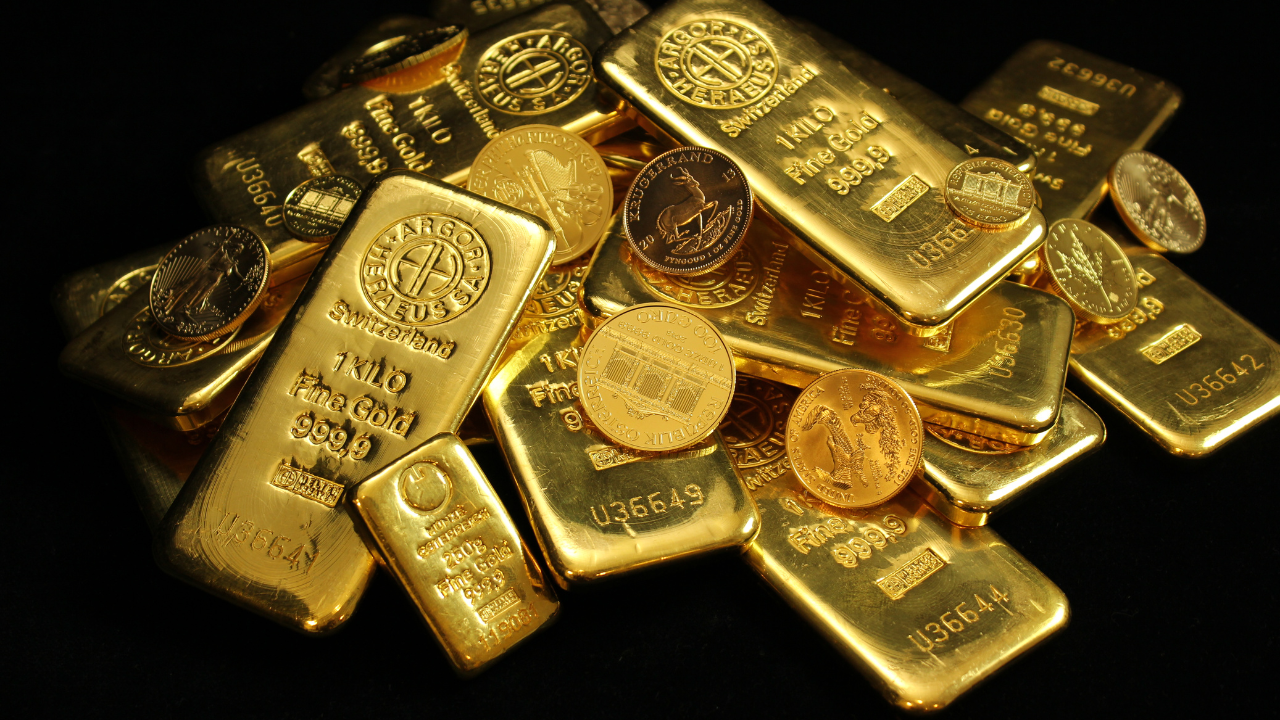Gold has been increasing in value recently due to several key economic and geopolitical factors that underscore its role as a safe-haven asset. Here are the top five reasons driving up the price of gold right now:
1. Inflationary Pressures
Global inflation rates have surged, particularly in the U.S. and Europe, as a result of supply chain disruptions and significant monetary stimulus during and post-pandemic. Gold traditionally serves as a hedge against inflation since its value tends to rise when purchasing power decreases. The 2023 inflation rate in the U.S., for instance, remains elevated compared to pre-pandemic levels, contributing to sustained demand for gold.
2. Geopolitical Uncertainty
Heightened geopolitical risks, such as tensions between major global powers and regional conflicts, often drive investors toward assets like gold, known for maintaining value in turbulent times. The ongoing conflict in Ukraine and diplomatic tensions in Asia have spurred a wave of “safe-haven” investments, driving up gold’s appeal among risk-averse investors
3. Weakening of the U.S. Dollar
The U.S. dollar’s value has fluctuated recently due to changing monetary policy signals from the Federal Reserve. Gold typically has an inverse relationship with the dollar; as the dollar weakens, gold prices generally rise because gold becomes cheaper for international buyers. This dynamic has played a significant role in gold’s appreciation, especially in light of currency volatility
4. Central Bank Purchases
Central banks around the world have been purchasing gold at record levels. In 2022, global central bank gold buying hit its highest level since 1967, driven by efforts to diversify away from the U.S. dollar. This sustained institutional demand underpins gold’s rising value and provides a strong bullish signal in the market
5. Market Uncertainty and Volatility
With concerns around economic slowdowns and potential recessions, investors are seeking more stable assets. Gold’s reputation as a “crisis commodity” attracts investors looking to preserve capital during market downturns. Fluctuating stock markets, driven by interest rate hikes and tech sector volatility, have led many investors to seek gold as a means of reducing risk in their portfolios.
These factors collectively contribute to gold’s appeal as a resilient store of value, pushing its demand and price upward in the current economic climate. Here’s the top 10 reasons why buying gold now is a strategic move, with insights from financial experts and supportive statistics.
1. Gold as a Hedge Against Inflation
Inflation has hit highs worldwide, and gold has proven its value as a hedge against it. According to a 2022 study by the World Gold Council, gold has protected against inflation over 79% of the time during major economic events over the past five decades. Ray Dalio, founder of Bridgewater Associates, underscores the importance of gold in inflationary times, stating that “gold is a diversifier against inflation and acts as a currency in times when traditional money is losing value.”
2. Economic Uncertainty Makes Gold a Safe Haven
From geopolitical tensions to fears of a global economic downturn, uncertainty is pushing investors toward the safety of gold. During the COVID-19 pandemic, gold prices spiked over 25% from January to August 2020, a testament to its status as a “safe haven” asset. As Robert Kiyosaki, author of Rich Dad Poor Dad, famously stated, “Gold is a hedge against government stupidity,” recognizing gold as a safeguard during unpredictable political and economic climates.
3. Growing Demand Across Jewelry and Technology Markets
Gold is not only a financial asset; it also has substantial demand in the jewelry and technology industries. In 2023 alone, demand for gold in jewelry increased by 10%, and its usage in electronics continues to rise due to its conductivity and durability. Major economies like China and India consume around 50% of the world’s gold, keeping demand high.
4. Portfolio Diversification Benefits
Gold’s price typically moves independently of traditional asset classes like stocks and bonds. For this reason, adding gold to a portfolio can reduce volatility and increase long-term stability. A study by J.P. Morgan shows that a 5-10% allocation to gold improves portfolio performance during market downturns, making it a valuable addition to a diversified portfolio.
5. Limited Supply of Gold Resources
Unlike paper money, gold cannot be manufactured or produced at will. Gold’s finite nature makes it inherently valuable. According to the U.S. Geological Survey, the world’s gold reserves stand at about 50,000 metric tons, meaning that as demand increases, the limited supply of gold will drive prices higher.
6. Historical Performance and Reliability
Over the long term, gold has demonstrated consistent value appreciation. From 1971 to 2021, gold posted an average annual return of 7.9%, even outperforming inflation. During the 2008 financial crisis, gold surged nearly 25% while the S&P 500 plummeted, proving its reliability as a store of value in both good and bad times.
7. Store of Wealth and Intergenerational Value
Gold has preserved wealth for thousands of years, even as currencies come and go. Central banks worldwide hold over 35,000 metric tons of gold in reserves, showcasing the asset’s role as a stable store of value. This intergenerational durability makes gold particularly appealing to investors who seek to pass down wealth securely.
8. High Liquidity and Ease of Trade
Gold is one of the most liquid assets, readily available for buying and selling on a global scale. Unlike real estate or collectibles, gold can be easily converted to cash without significant losses. Gold-backed ETFs have added to this liquidity, allowing investors to buy and sell gold at market prices instantly, offering flexibility that few assets can match.
9. Protection Against Currency Depreciation
When the value of a currency declines, gold often rises in response, making it a strong defense against currency risk. During the 1970s, for example, the U.S. dollar lost 30% of its value while gold prices surged by 150%. Ray Dalio suggests that “if central banks keep printing money, then owning a hard asset like gold is essential,” acknowledging its role in counteracting currency weakness.
10. Institutional and Central Bank Demand
Central banks and large institutions have been buying gold at record rates. In 2022 alone, central banks purchased over 1,136 tons of gold, a record-breaking figure. With more institutions recognizing gold’s value, this surge in institutional demand is a positive signal for future gold prices.
Summary
With inflation, economic uncertainty, and rising institutional demand, the reasons for owning gold are compelling. As Robert Kiyosaki aptly says, “Gold and silver are God’s money,” acknowledging its timeless nature and intrinsic value. Gold remains a foundational investment for those looking to protect, diversify, and grow wealth in an increasingly complex economic landscape.
Take Action
“The best time to plant a tree was 30 years ago. The next best time is now.”
So too with Gold!
Secure your families generational wealth by starting to purchase gold today. You can set up your free gold account here and learn more about dollar cost averaging and utilising a decentralised gold backed debit card that empowers you to buy, spend, save and earn with gold.






Read the Comments +